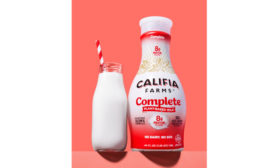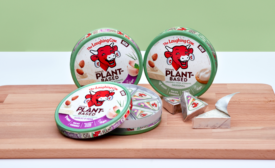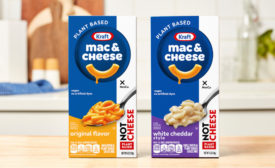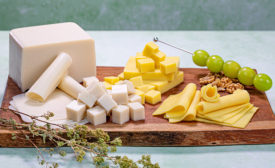Home » Keywords: » plant-based
Items Tagged with 'plant-based'
ARTICLES
Almond and oat are the two most popular plant-based dairy alternatives for baristas.
Read More
Episode 37 — Cargill’s Mark Fahlin joins “Let’s Talk Dairy” podcast
Dairy and its ability to promote health and wellness trends are discussed.
February 2, 2024
Laughing Cow offers dairy-free product
The Laughing Cow Plant-Based is exclusively available at Whole Foods for $4.49, and starting this spring, both Garlic & Herb and Original varieties will be available at Kroger stores nationwide.
January 9, 2024
Kraft debuts first plant-based mac and cheese in U.S.
KRAFT NotMac&Cheese is the third innovation to launch in a year from The Kraft Heinz Co. and TheNotCompany, Inc. joint venture.
November 30, 2023
Exploring the importance of new innovations in dairy foods
Based on a McKinsey survey, most people still consume dairy, and a very small amount consume alternatives exclusively.
November 2, 2023
Mooala introduces three-ingredient, shelf-stable milk
All of Mooala's family-friendly plant-based milks and creamers are certified USDA-organic.
September 21, 2023
Opportunities abound in the dairy-alternative market
Oat-based and pea protein are two hot industry segments.
September 20, 2023
There is room for both traditional and plant-based dairy
Processors are making consumer-based adjustments
September 6, 2023
Plant-based dairy lags in nutrition
Protein is one place traditional dairy outshines its brethren.
August 9, 2023
Get our new eMagazine delivered to your inbox every month.
Stay in the know on the latest dairy industry trends.
SUBSCRIBE TODAYCopyright ©2024. All Rights Reserved BNP Media.
Design, CMS, Hosting & Web Development :: ePublishing












